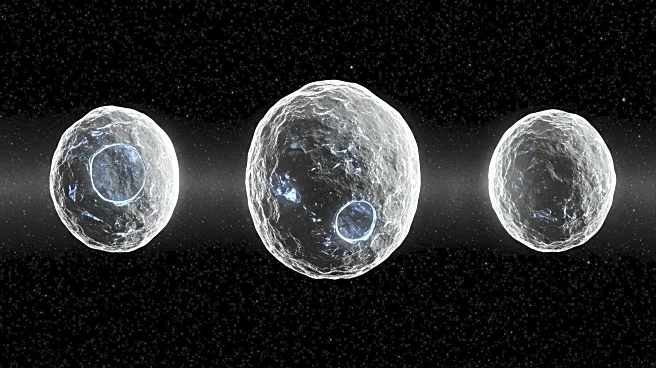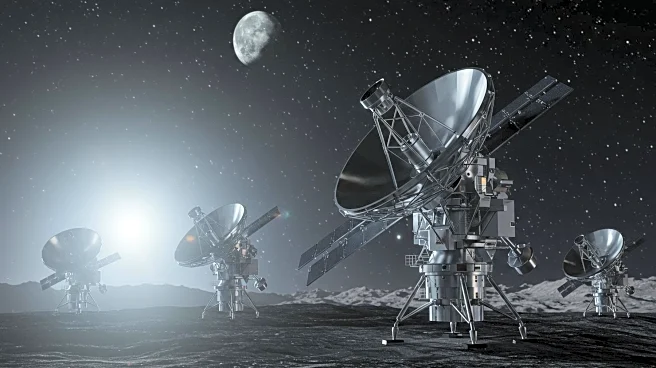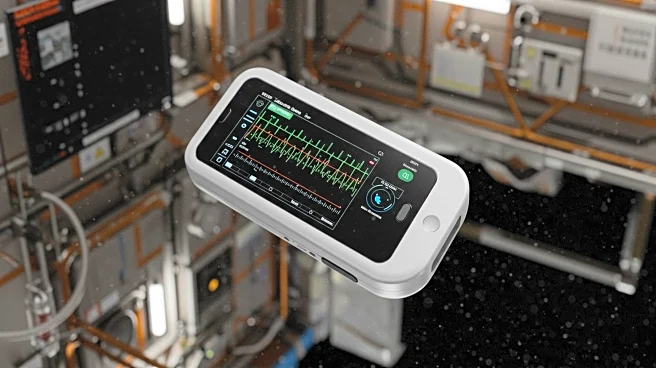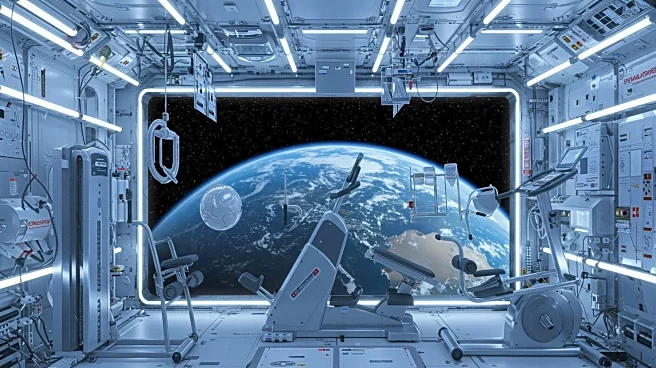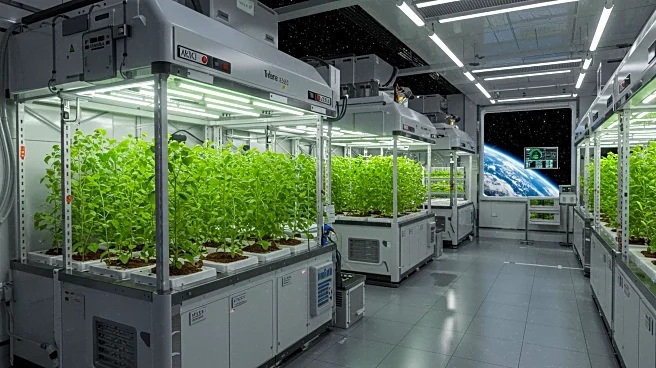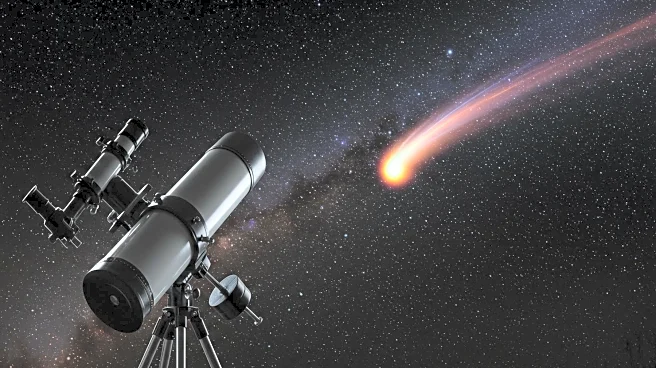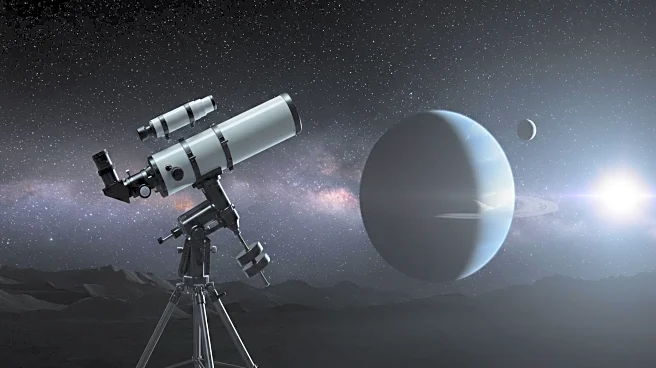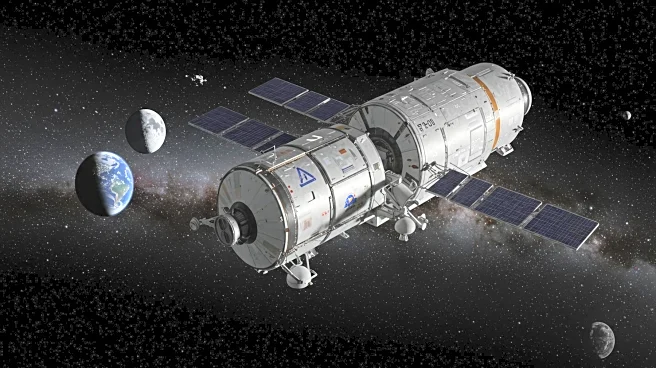What's Happening?
A study conducted by the Southwest Research Institute (SwRI) has provided evidence supporting the hypothesis that the near-Earth asteroids Bennu and Ryugu originated from the Polana collisional family in the main asteroid belt between Mars and Jupiter. The research involved comparing spectroscopy data from Polana with spacecraft and laboratory data from Bennu and Ryugu samples, revealing similarities in their near-infrared spectrum. Dr. Anicia Arredondo, the lead author of the study, explained that large asteroids collided early in the solar system's formation, creating an 'asteroid family' with Polana as the largest remaining body. The study utilized the James Webb Space Telescope to observe Polana and compared its spectral data with samples collected by the Japan Aerospace Exploration Agency's Hayabusa2 and NASA's OSIRIS-REx missions.
Why It's Important?
The findings of this study have significant implications for understanding the formation and evolution of asteroids in our solar system. By establishing a common origin for Bennu, Ryugu, and Polana, scientists can better comprehend the processes that shaped these celestial bodies. This knowledge is crucial for future asteroid exploration missions, which aim to gather more data on the composition and behavior of asteroids. Additionally, understanding the origins of these asteroids can provide insights into the early solar system's dynamics and the role of collisions in shaping planetary bodies. The study also highlights the importance of international collaboration in space exploration, as evidenced by the joint efforts of NASA and the Japan Aerospace Exploration Agency.
What's Next?
The research team plans to continue analyzing the spectral data from Bennu, Ryugu, and Polana to further refine their understanding of these asteroids' origins. Future observations using advanced telescopes and space missions may provide more detailed information on the composition and surface characteristics of these asteroids. Additionally, the study's findings could influence the planning and objectives of upcoming asteroid missions, focusing on the exploration of asteroid families and their potential resources. As scientists gain more insights into the history and evolution of asteroids, they may also explore the possibility of utilizing asteroid materials for space exploration and resource extraction.
Beyond the Headlines
The study raises intriguing questions about the long-term impact of asteroid collisions on the solar system's architecture. Understanding the history of these collisions could shed light on the distribution and characteristics of other asteroid families. Moreover, the research underscores the importance of studying asteroids not only for scientific knowledge but also for potential applications in planetary defense strategies. As Bennu and Ryugu are considered near-Earth asteroids, insights into their trajectories and compositions could inform efforts to mitigate potential asteroid threats to Earth.


